Remember the days when you excitedly looked forward to disembarking at your train destination, almost oblivious to the dirt and filth along the tracks, with endless slums and shanties and if you happen to arrive in the early hours of the day, the repulsive display of bare bottoms of desperate relievers on the track with their lotas besides them. You would eagerly look to identify the known landmarks and impatiently get ready to spot and call out for your contact on arrival. The halting of the train would give way to controlled chaos, which is to date the hallmark of the railway station, which heightened the sense of anticipation of having completed the journey. You had arrived.
Well, a lot of that—if not all—is about to change.
Practically in all our cities, the old railway stations stand with immense pride as major landmarks. Old Delhi railway station, Howrah in Kolkata, Egmore in Chennai, Pune, Bhopal, Mumbai, where the iconic structure still stands by its original name Victoria Terminus (VT), despite it being officially christened Chhatrapati Shivaji Maharaj Terminus (CSMT) years ago.

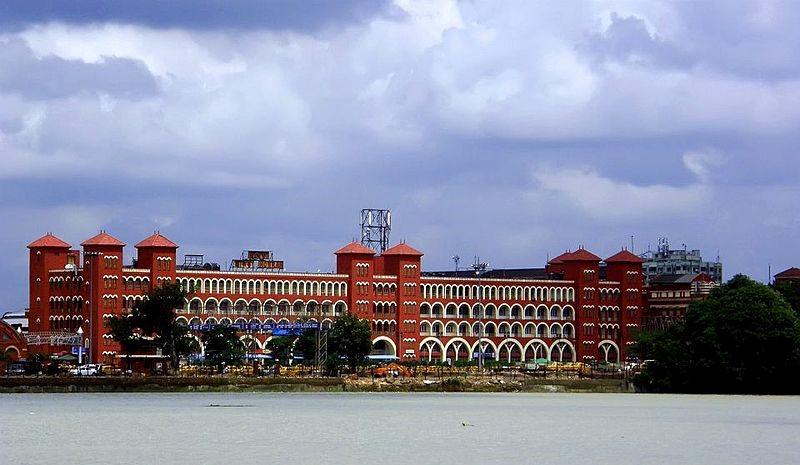
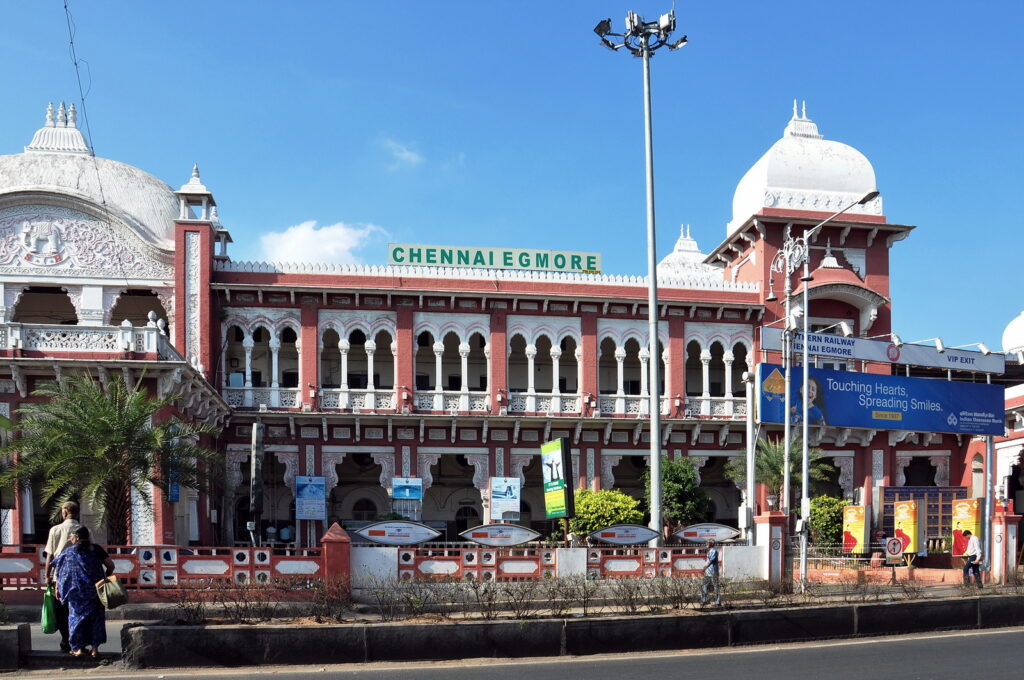
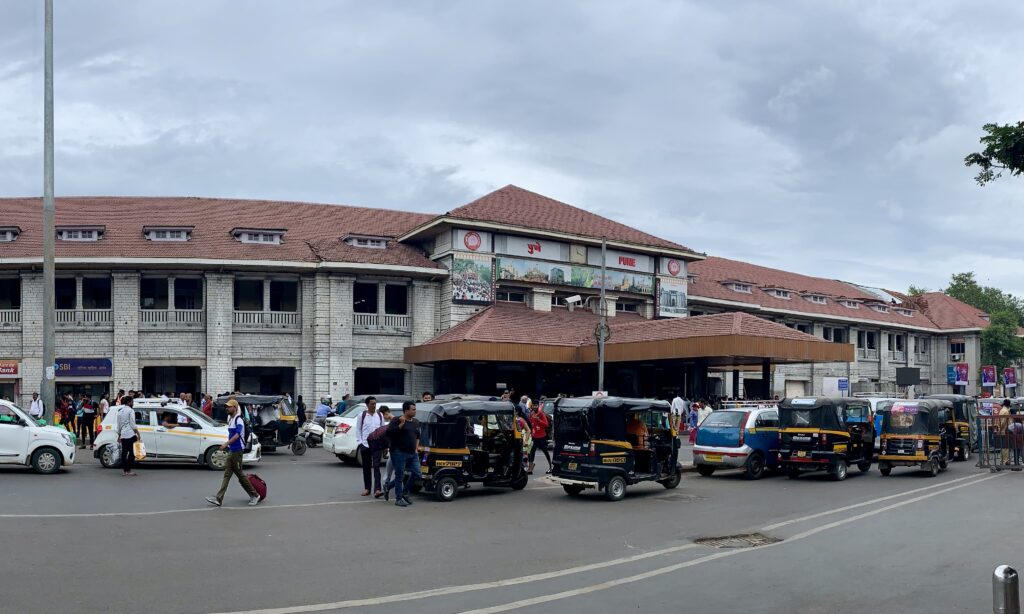
Most railway stations were established in the early years of independence—in fact, even earlier—as the British wanted to transport assets to the established ports of Bombay, Calcutta, and Madras. These have since grown almost organically to somehow cope with the phenomenal traffic both inside and outside the stations. The passenger traffic and intensity of trains have increased many folds. The station buildings have struggled to cope with this demand incrementally-almost an ad hoc growth in physical infrastructure The traffic chaos outside has grown in proportion and has almost come to be accepted as a normal part of city growth. The ‘station road’—the most active (sometimes busy 24×7), full of life and confusion—is a mix of commercial and tourist activities immediately surrounded by residential areas and is a lasting tribute to the flexibility of the Indian city and the coping power of the citizens.
Railway stations of Varanasi, Pune, Agra, and dozens of other cities display this controlled disorder. In our large metros, the process of ‘decentralization’ of station intensity has already started, with many trains shifting out of the core stations to either newly created or upgraded outlying stations. What is important to remember is that most railway stations have become, over time, extended hubs of travel-mode interchange points where the local road network connects you to a national network at the next level of transportation. So far, these hubs have, in a sense, directed the growth of the cities and have now become the doorsteps of entrance portals to a higher level of travel.

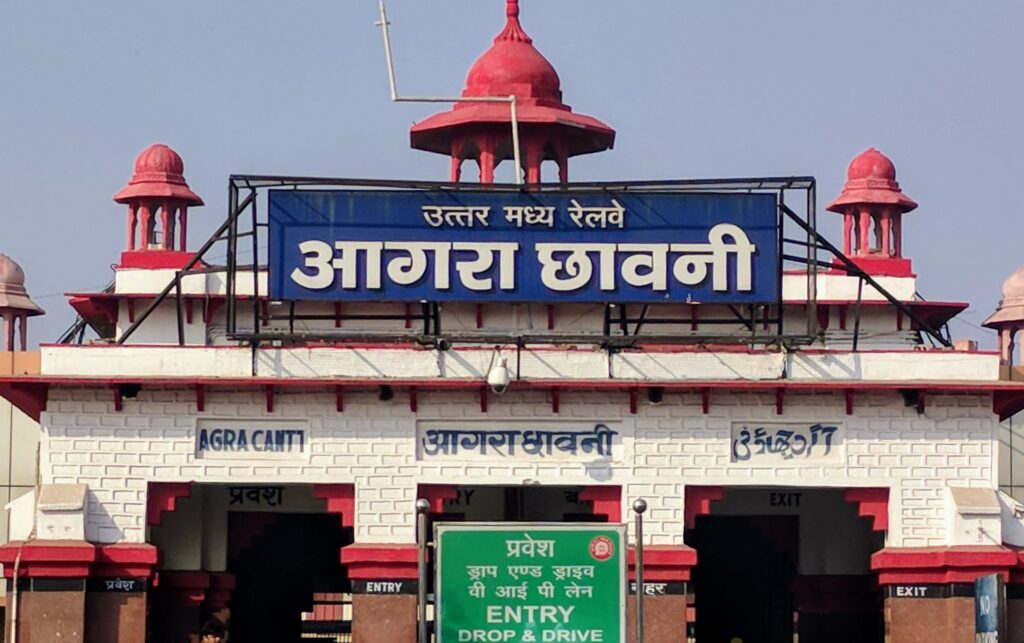
And that is why the station is an integral and important part of the city.
The Indian Railways is a mammoth organization offering train service on approximately 65,000 km of track, the owner of about 4.8 lakh ha of land, and fixed assets of INR 2400 billion (2011–12) managing over 7300 stations. With a view to monetizing prime land assets in all cities and an all-out attempt to modernize the infrastructure, the announcement of the Ministry of Railways in connection with the GOI’s Amrit Bharat Station Scheme to upgrade and modernize approximately 510 railway stations, ranging in size from as tiny as Vishwamaitri (20 acres) to as vast as Prayagraj (271 acres), has been music to the ears of architects, urban designers, and developers across the country.
The projects shall be given out in the EPC (engineering, procurement, and construction) mode. Nearly 35 contracts have already been awarded and the work has started. A large cross-section of professionals and developers, including RITES, have been roped in to contribute expertise.
In a consortium with British engineering firm Mace, SYSTRA India will be working on a PMC contract involving project management and redevelopment of the Mumbai station on behalf of the Rail Land Development Authority (RLDA). The aim is to preserve the station’s heritage while modernizing it to make it a multimodal hub.
In the guidelines for the new stations, there is an interesting pre-requisite of introducing “city centre” like space, in the proposals. This will be like the second coming of the wave that ushered in the ‘mall culture’ more than a decade ago.
The underlying theme of the new stations is to move away from the station design in a colonial medium to local ethos.
A lot of proposals are already in the pipeline. Almost all the proposals in their report use a description that revolves around the following markers—the master plan is a strategic plan caring for the community, environmental, and economic viability, almost always in a PPP mode, operating within the local bye-laws, honouring the traditional mixed-use and caring for the infrastructure of the adjoining area, with a total plan of monitoring and evaluation, using global best practices … and above all, it is a very sustainable plan.
It takes one glance at the declared objectives of the new rail stations as laid out in the railway manifesto to understand that ALL boxes have been ticked.
The term ‘Sustainable Plan’ has become an oxymoron—especially when used loosely in the context of new development which is to be transplanted on a large portion of the city that has existed and grown with it for decades.
The comprehensive development of a modern railway station is a visible acknowledgement of a nation on the move. A railway station, unlike a stand-alone architectural accomplishment, is a project on the threshold of being a town planning commitment. Professionally speaking, it is also an opportunity for urban design expression. It is challenging to plan a site as large as 80–115 acres in the midst of usually the most prime land central location and critical connectivity. Not to mention the complex restrictions, which have grown over time to act as unique limitations varying from site to site. The challenge of providing a viable design solution thus becomes that much more typically site-specific and demanding.
The visual manifestation of this immensely complex problem largely defines not only its public acceptability at large but provides us with a measure of how much our profession has matured to move in the direction of “Now it is our responsibility to connect the rail with a better identity and modern future,” one of the much-lauded and important planning objectives as stated by the PM. In the heat of the currently prevailing climate of distancing ourselves from the ‘styles’ introduced—nay imposed—on us by the British, the Gothic, Indo-Saracenic, Victorian, Neo-Classical, et al, we realize that we have come far but are not yet close enough to a viable, acceptable local alternative.
For the vast array of proposals coming out so far, there seem to be roughly three distinct categories on display.
In the middle category is the most non-descript-value neutral-type of expression. These proposals do not wish to evoke extra preceptory stimulation and tend to play safe by expressing the used space and materials in the most conventional, read mundane, manner. Almost a non-controversial statement, either by accident or by design.

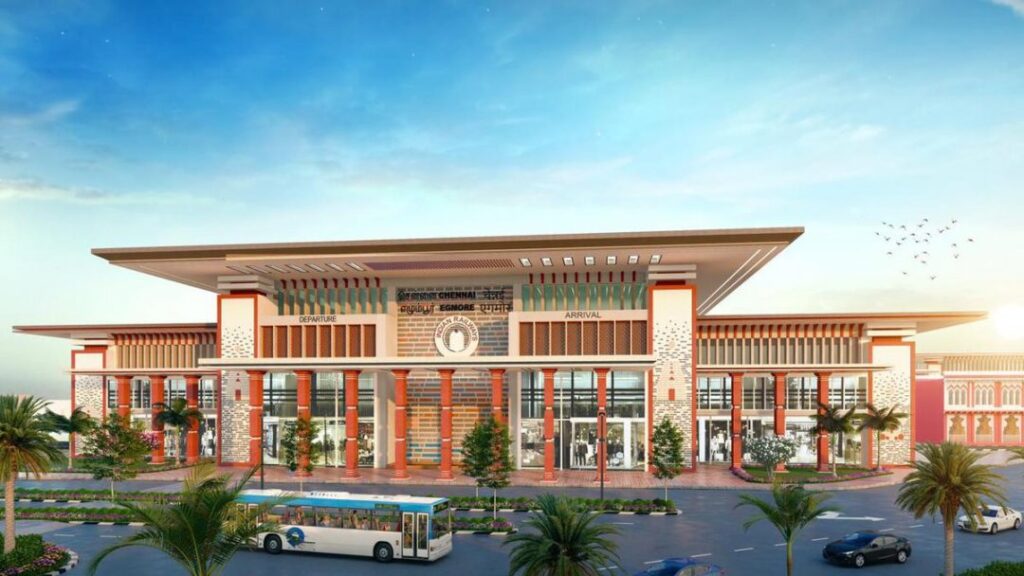
The visual representation of the other two categories swings to two extremes.
At one end, are the presentations weighed down heavily by the moral obligations to rise to the occasion by expressing the traditional landmarks in a ‘modern’ setup.
This category gets its legitimacy and inspiration from the example of New Delhi. The current New Delhi railway station underwent a makeover some 15 years ago and, without much ado, transplanted a part of Robert Russell’s CP colonnade façade as the new face of the station. This was a signal to the other architects waiting in the wings that the safest way to project the domesticity of the railway station was to replicate a part of the prominent city landmark as its own identity.
In this category, therefore, they place quite unapologetically the shikhara, the gopuram, and the ‘mukut’, complete with the ‘Sudarshan chakra’ on the top of the buildings. In rare examples, the render shows several life-size cutouts of the PM as ready-to-use “selfie points” as the high water mark, to induce a sense of devotion to the higher order.
A potpourri of disproportionate columns supporting lotus capitals and other architectural elements vaguely defined by religious identity, in addition to multi-colour nighttime illumination, completes the gaudy picture. Little imagination is needed to guess that these are the gateways to religious destinations. The functional efficiency of these as well as other proposals is subject to long-term feedback from the users, which could take years.
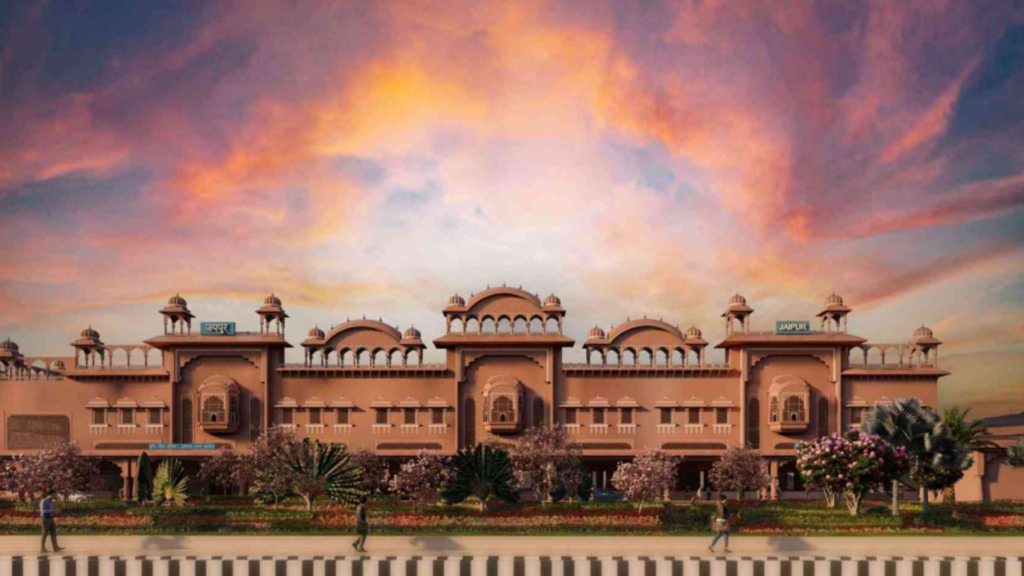

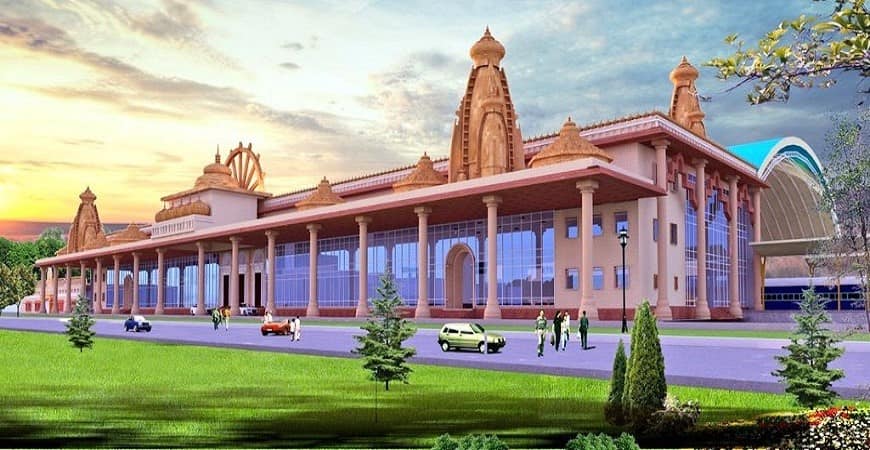

The third and most eye-catching group is that which presents spectacular solutions. At first glance, the design proposal coming out is a tribute to the uninhibited modern thinking of the architect, daring to go ahead and plant a state-of-the-art building on the given site.
On closer scrutiny, these appear to be risky attempts to merely break away from the mundane solutions at the cost of the conventional approach to design and sit comfortably on the site or harmoniously blend with the existing surroundings.
These are proposals driven mainly by the adrenaline-inducing high-end computer-prompted AI solutions that have got many professionals hooked. The end products—gleaming glass and concrete blended in unbelievable, larger-than-life shapes and forms—ensure awesome results. Very challenging to a normal person’s imagination.




But, of late, discerning audiences have grown cautious about taking these at face value.
Public trust in these, especially for large projects, does not come easily. The reason why there is a trust deficit among the people to accept pompous proposals is easy to understand.
What with the general public being confronted daily with the depressing news of train accidents, newly inaugurated tunnels flooding, roads and bridges collapsing, airport roofs falling, and, in some exceptionally agonizingly humorous situations, the overbridge being constructed from two ends refusing to meet in the centre, going off alignment by more than a metre!
This state of affairs makes it all the more compelling for the consultants to make proposals firmly planted in the socio-cultural milieu at one level and ensure engineering commitments that counter the most adverse conditions.
In all fairness to some proposals, it must be said that there are a few who stand above the din of gimmickry and delusions. These proposals hold their own and display a dignified and sober handling of scale and an attempt to merge into the local ethos.
These professionals have made proposals using their skill and understanding to provide what can be safely called ’timeless’ architecture, which not only merges seamlessly with the surroundings but also guarantees to grow and develop with the city. The simplicity of the proposals lends them a measure of superiority.
Space and the built environment are experienced at a very personal level. All built environments leave an impression on a person’s mind depending on the efficiency and ease of movement, a perceived sense of security, the personal relateability with the scale of the space, the signage to help navigate with ease, the sensory stimulations triggered by the colour, the texture, and the nature of the elements, connectivity with other people, the ventilation, and the quality of light.
The cumulative experience, thereby, establishes a datum for us to measure similar experiences that follow. The new railway station designs are required to re-establish all such reference lines in the minds of the users.
Simplicity always scores over unresolved complexity.
A living example of this statement is the fact that even after the introduction and operationalization of dozens of big, bigger, and biggest airports around the globe in recent times, the good old Schiphol Airport in Amsterdam retains its efficiency and charm as it had when it opened almost seven decades ago.
Credits:
Research: Geethu Gangadhar
Feature image: Render of New Delhi Railway Station





One Response
Well argued essay, couldn’t agree more with thd conclusions drawn.